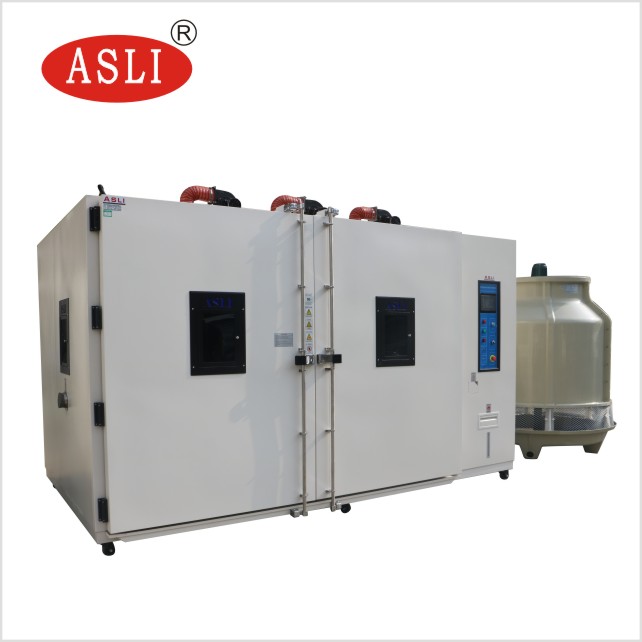In the realm of electronics manufacturing, the longevity of devices plays a pivotal role in consumer satisfaction and brand reputation. Walk-in temperature aging rooms represent a critical advancement in this field, offering an innovative means to simulate and accelerate the natural aging process under controlled conditions. This method not only aids manufacturers in identifying potential failure modes at an early stage but also ensures that the electronics can withstand varied environmental stresses over time. One might wonder, however, just how effective these rooms are in mimicking real-world conditions and what specific technologies and protocols are involved in optimizing this aging process.
While technological advancements continue to reshape our lives, the importance of electronic durability cannot be overstated. In an era where dependence on electronic devices is ever-increasing, ensuring the resilience of these tools is paramount.
Durability testing emerges as a critical process in achieving this, focusing on assessing the longevity and reliability of electronics under various stress conditions. This approach not only enhances product quality but also empowers consumers with the confidence that their investments are secure.
By rigorously applying durability tests, manufacturers can identify potential vulnerabilities early, thus preventing future failures and extending the lifespan of the devices.
Electronic resilience, therefore, plays a crucial role in both advancing technological reliability and reinforcing consumer trust.

Walk-in temperature aging rooms are specialized environments designed to test the durability of electronic devices by exposing them to various temperature conditions over extended periods.
These rooms are crucial for assessing how electronics perform under thermal stress, simulating real-world conditions to ensure reliability before products reach consumers.
By precisely controlling the environment, manufacturers can accelerate the aging process, identifying potential failures and improving product designs.
This control over the aging process helps in predicting the lifespan and performance of electronic devices.
Innovative technologies underpin the effectiveness of walk-in temperature aging rooms, with several key features enhancing their functionality. These chambers are crucial for assessing the longevity and reliability of electronic components under varying environmental conditions. Central to their operation are advanced temperature control and humidity regulation systems, which allow precise settings according to specific testing requirements.
| Feature | Description | Importance |
|---|---|---|
| Programmable Controls | Enable setting exact temperatures | Ensures precision |
| Humidity Regulators | Adjust moisture levels automatically | Maintains stability |
| Thermal Insulation | Minimizes heat loss | Increases efficiency |
| Safety Mechanisms | Protects against overheating | Ensures safety |
| Data Logging | Records conditions during tests | Provides accountability |
These technologies provide users with the control necessary to simulate years of product usage within a short period, ensuring electronic components meet their expected lifecycle.

Customizable Walk-In Temperature and Humidity Test Chamber | ASLI Environmental Testing Equipment
Building on the foundation of advanced features in temperature aging rooms, the structured testing protocols and procedures play a pivotal role in determining the durability of electronic components.
These protocols are meticulously designed to simulate various environmental conditions that products might face during their lifecycle. Through the use of thermal cycling and accelerated aging, these tests provide crucial data on how electronics react to extreme temperature variations over time.
This rigorous approach ensures high-level control and predictability in product quality, enhancing component longevity.
Implementing rigorous testing protocols not only enhances the reliability of electronic products but also yields significant benefits for manufacturers and consumers alike. By utilizing walk-in temperature aging rooms, manufacturers can significantly mitigate the risk of product failures, leading to reduced warranty claims and associated costs. This strategic approach not only ensures product reliability but also promotes brand loyalty among consumers who value durability and performance.
| Benefit | Manufacturer Advantage | Consumer Advantage |
|---|---|---|
| Cost Reduction | Lower warranty costs | Less need for replacements |
| Product Reliability | Fewer recalls | Longer product lifespan |
| Brand Loyalty | Increased market share | Trust in product quality |
| Competitive Edge | Innovation leadership | Access to reliable tech |
| Customer Satisfaction | Positive feedback | Enhanced user experience |
Numerous companies have demonstrated the effectiveness of rigorous testing protocols in enhancing the longevity of electronic products. Through the use of walk-in temperature aging rooms, these businesses ensure their electronics can withstand various environmental stresses, thus translating lab results into real-world applications.
These success stories underscore the crucial role of controlled testing environments in driving industry innovations and product reliability.
How can precision be overlooked? To calibrate equipment in walk-in temperature aging rooms, adhere strictly to calibration techniques aligned with the equipment specifications, ensuring meticulous control and reliability in the testing environment.
The cost of installing a walk-in temperature aging room varies based on installation budget and equipment specifications. Ensuring precise control, expenditures include design, materials, and labor, typically ranging from $50,000 to $250,000.
Safety protocols for operating temperature aging rooms include comprehensive emergency procedures. These ensure control, with 80% of incidents preventable by routine checks and training on equipment usage, fire suppression systems, and ventilation maintenance.
Yes, walk-in temperature aging rooms can also be utilized for textiles aging and pharmaceuticals testing, providing controlled environments crucial for assessing product durability and stability under various temperature conditions.
In walk-in temperature aging rooms, humidity control is akin to a gardener meticulously watering plants. Humidity sensors monitor the air, ensuring precise moisture regulation to maintain optimal conditions for the materials being tested.
In conclusion, the deployment of walk-in temperature aging rooms represents a profound advancement in the stewardship of electronic reliability. By embracing these controlled environments, manufacturers are able to significantly refine the resilience of devices, thereby enhancing consumer satisfaction and trust. This methodology not only fortifies product quality but also conserves resources by minimizing premature failures. The collective wisdom gleaned from such rigorous testing protocols promises a future where electronic devices endure beyond traditional expectations.
Founded in 1988, ASLI (China) Test Equipment Co., Ltd. produces high-quality inspection instruments and testing equipment, including temperature and humidity chambers, aging testers, and vibration testers. Certified to international standards, ASLI serves research, quality inspection, and educational sectors worldwide, renowned for precision, reliability, and exceptional customer service.
Contact us for a free quote of your ideal walk in temperature humidity test chamber!

